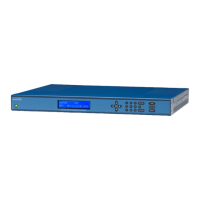Configuring NTP & SNMP Parameters
Edit the Configuration Files
In Windows, edit the configuration files using a text editor such as Notepad or Wordpad. For
more information, see “D: Network Time Protocol (NTP)” on page195.
If using the preconfigured FTP server (downloaded from Click here, and extract it to the C:\
drive on your workstation, the default or home directory of “anonymous”.
Note: Follow these guidelines when editing the configuration files:
• If the editor displays odd 'box' characters or the lines of text don't wrap properly,
close the file without saving changes and switch to a different text editor.
• Don't rename or save the configuration files as a new file type.
• Some text editors encode end-of-line carriage returns that cause errors when XL-
GPS refers to the file. Notepad, WordPad, Microsoft Word, and Vim don't seem to
have this problem.
• The configuration files are automatically transferred to/from the FTP server in binary
format. They retain the DOS or UNIX file conventions of the editor. XL-GPS works
with either format.
Move the Configuration Files Back to the XL-GPS
Reboot Warning: The following steps cause the XL-GPS to reboot.
Using the XL-GPS’s command line, enter one of the commands below, replacing
<IP Address> with the IP address of your workstation/FTP server.
To move the NTP config files, type:
>f100 config ntp set host:<IP Address> dir:<subdir>
To move the SNMP config file, type:
>f100 config snmp set host:<IP Address> dir:<subdir>
To move the NTP and SNMP config files, type:
>f100 config ntp snmp set host:<IP Address> dir:<subdir>
Here’s an example of a successful SNMP and NTP config file transfer:
>>f100 config set ntp snmp host:192.168.0.1 dir:
Host config ip 192.168.0.1 already configured
Are you sure(y/N)?y
Source file snmp.conf bytes read: 1275
Dest file /config/snmp.conf bytes written: 1275
Source file ntp.conf bytes read: 1166
098-00116-000 Rev. A............................... Page 173 of 221

